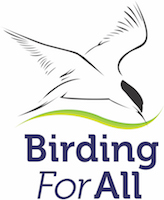This article first appeared in the May 2021 edition of Birdwatching magazine
A few winters back a fieldfare found the apples we string up for the Parrots and chomped his way through them for a fortnight. This year our minuscule backyard had another, albeit briefer, first… a redwing sat in the cherry tree then ate a few cotoneaster berries before departing. While the sparrow and starling numbers go on rising (in the latter case, on one day we had 72 in all at once), it was a ‘quiet’ winter, none of the rarities, or even rare for us, visitors
Spring started the day we saw a blackcap. It was a delight to watch them (blackcap was joined by brown-cap) ferreting about in the pots or creeping through the leafless bushes. Always they ended up in one place – the massed ivy that grows over our fence from our non-gardening neighbour. It made me decide this year not to pull it up wherever I come across it. That natural food has meant increasing numbers of woodpigeons now outnumber the feral pigeons and collared doves. Winter visiting blackbirds peaked at seven, again courtesy of the heavily berry-laden ivy. In early March Blackcaps peaked at three… bolder than at first, sitting on the edge of the cherry tree in the sun… alas not singing, but looking very dapper.
The late snow hit my plants hard. Being in the soft south I’m used to annuals becoming perennials and tender plants over-wintering. But this winter we had more gales and more frosts than in the last five years put together. Climate change deniers please note! Leaves dropped and were blown over the road and down the hill, leaving bare-boned bushes that most winters are leaf-clad and bird havens. Foolishly, I’d left out a few plants normally kept indoors. Of course, they died back but the new growth on heavily pruned fuchsias went the same way as a myriad of others and the blanket of snow broke stems and left a sodden green mess where once were tender new leaves.
The gaps will get re-filled, but more and more I deliberately plant ‘weeds’. Native pollinators love native pollen, so now I fill gaps with clover and comfrey, teasel and borage and a host of other wildflowers. It’s too early to tell whether the bees will be grateful, but it is interesting to note many survived the cold-snap much better than their foreign rival cultivars. The osteospermums should have been cut back hard in the autumn but it’s never been necessary before… now many have died and others are teetering on the edge.
Last year the midnight chorus started in early February and the 27th saw the first egg-laying. This year the song started at the end of the month and the first eggs were a week late. If you lean out of the back bedroom window after dark and prick up your ears the male voice choir serenades you. Several different pitches of croak entertain Hawkeye, but my challenged hearing struggles to connect at all. An early morning peek at the pond from above catches a writhing clump of a dozen frogs in an inelegant mating dance and rival punch-up.
Two decades ago, driving in the dark back to the eco-lodge in a Kenya National Park we stopped briefly at a muddy puddle… the night air was full of contrasting and complimentary frog calls as the puddle was full of frogs. Despite morning birdsong and the rumble of lions at night, those frogs are my abiding audio memory of east Africa.
Before the birdsong begins the frog chorus ushers in the natural spring.





